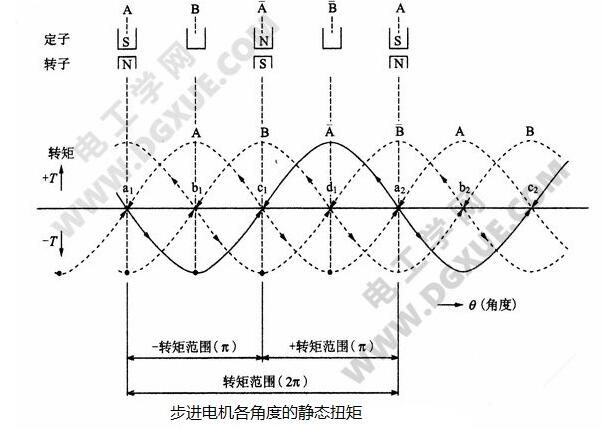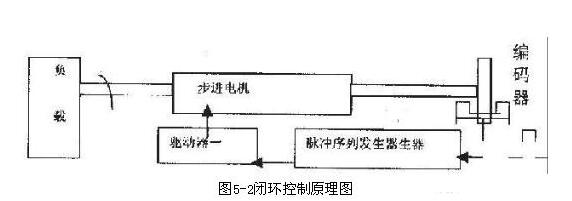Stepper motor control methods are generally divided into open-loop control and closed-loop control of two control methods, including open-loop control of the stepper motor is the simplest control method is the loop control system, in this control mode, stepper motor control pulse The input does not depend on the position of the rotor, but instead sends out its control pulse in a regular pattern. The stepper motor only works on this set of established pulses. This control method is more suitable for the uniqueness of the stepper motor. To control the stepper motor.
What is a closed-loop stepper motor?Closed-loop control is a basic concept of cybernetics. Refers back to the control input as a controlled output, and a control relationship that exerts a control influence on the input. Closed-loop control of the stepping motor uses position feedback and/or speed feedback to determine the phase shift that is appropriate for the rotor position, which can greatly improve the performance of the stepper motor.
In a closed-loop controlled stepper motor system, or when tracking and feedback with a given accuracy, the operating speed range can be expanded, or the tracking and positioning accuracy can be improved at a given speed, or the limit speed index and limit can be obtained Accuracy indicators.
Closed-loop stepper motor controlStepping motor closed-loop control can be roughly divided into two types:
1. The phase relationship between the exciting flux and the current is kept consistent so that it produces an electromagnetic torque that can drive the load torque. This way of controlling the motor current is the same as that of the brushless DC motor, which is called the brushless drive method or Current closed-loop control method.
2. The method of controlling the excitation magnetic flux and current phase angle is a certain method of maintaining the motor current. This is called the power angle closed-loop control method. The power angle is the phase angle at which the magnetic poles of the rotor and the stator (or the axis of the rotating magnetic field of the stator of the synchronous machine can also be) attract each other. This power angle is small at low speed or light load, and is large at high speed or high load. Referring to the figure below in the principle part of the open-loop control, the “bar A†phase attracts the rotor pole, and the second “bar B†phase is excited with an angle of π/2. The rotor pole is located at the front of the “bar A†phase ( In the figure, when the S pole of the rotor is on the left side of the A phase, the magnetic pole "B" phase starts to be excited.

why? Because at a high speed, affected by the inductance of the coil, the off-time of the A-phase current is prolonged, and the rise time of the B-phase current is also prolonged. Therefore, the angle at which the maximum torque is accelerated is increased as the speed becomes faster.
Closed-loop stepper motor working principle diagram
This control method directly or indirectly detects the position or velocity of the transfer (or load), and then automatically gives the drive pulse sequence of the stepper motor through feedback and appropriate processing. This drive pulse sequence is based on the load or There are many ways to realize this kind of control method in which the position of the rotor changes at any time. In the occasion where the accuracy is very high, combined with microstep drive technology and microcomputer control technology, high position accuracy requirements can be achieved.
Closed-loop stepper motor advantagesa. As the output torque increases, the speeds of both are reduced in a nonlinear manner. However, the closed-loop control improves the torque-frequency characteristics.
b. Under closed-loop control, the output power/torque curve is improved because, under closed loop, the motor excitation conversion is based on the rotor position information. The current value is determined by the motor load. Therefore, even in the low speed range, the current It can also be fully converted into torque.
C. Under the closed-loop control, the efficiency-torque curve increases.
d, using closed-loop control, can get higher running speed than open-loop control, more stable, smoother speed.
e. With closed-loop control, the stepper motor can be accelerated and decelerated automatically and efficiently.
f. Quantitative evaluation of closed-loop control relative to open-loop control in terms of rapidity can be obtained by comparing the time taken to pass a route interval within step IV:

g. With closed loop drive, the efficiency can be increased to 7.8 times, the output power can be increased to 3.3 times, and the speed can be increased to 3.6 times. Closed-loop stepper motor performance is better than open-loop driven stepper motors in all aspects. Stepping motor closed-loop drive has advantages of stepping motor open-loop drive and DC brushless servo motor. Therefore, in a position control system with high reliability requirements, a closed-loop controlled stepping motor will be widely used.
What is the difference between open loop and closed loop of stepper motor?1, open-loop control content for the other party to perform just fine. No feedback. Closed-loop control needs to be performed by the other party and reported to you. Have feedback.
2. Whether it works on the current control. Open-loop control is generally a control activity that is completed in an instant. Closed-loop control will continue for a certain period of time. This can be used to judge.
Thin film transistor liquid crystal display, commonly referred to as the TFT-LCD, is a type of liquid crystal display that USES thin-film transistor technology to improve the image quality. Although TFT-LCD is collectively known as LCD, it is an active matrix LCD used in televisions, flat screens and projectors.
Simply put, the TFT-LCD Panel can be seen as a layer of liquid crystal sandwiched between two glass substrates, the upper glass substrates being color filters, and the lower glass having transistors embedded in it. When the current passes through the transistor, the electric field changes and the liquid crystal molecules deflect, so as to change the polarization of the light, and then the polarizer is used to determine the light and dark state of the pixel. In addition, the upper glass is fitted to the color filter, so that each pixel contains three colors of red, blue and green, which make up the video image on the panel.
The Thin film Liquid Crystal Display is a type of most liquid crystal display that USES thin-film transistor technology to improve the image quality. Although TFT-LCD is generally referred to as LCD, it is an active matrix LCD. It is used in TV, flat panel display and projector.
I2C Tft Display,4.3 Inch Display,Lcd 4.3 Inch,Arduino 3.5 Tft Lcd
TONYA DISPLAY LIMITED , https://www.tydisplay.com